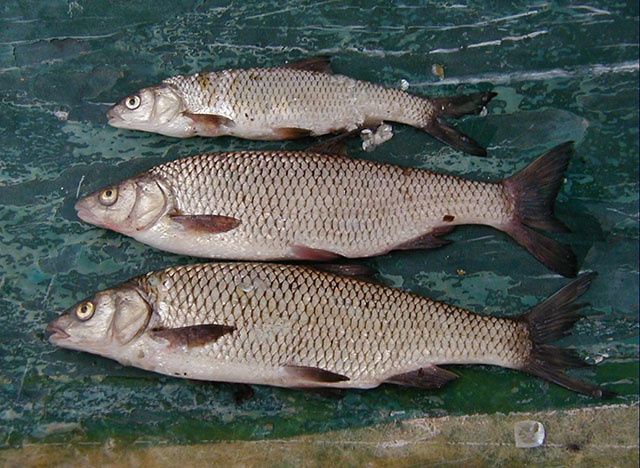| Leuciscidae (Minnows), subfamily: Leuciscinae |
| 27.7 cm TL (male/unsexed) |
|
benthopelagic; freshwater |
| Europe: Neretva, Trebisnjica and Ljuta drainages (Croatia and Bosnia Herzegovina). |
|
Can be diagnosed from its congeners in Western Balkans and Adriatic basin by the following characters: 44-51 scales on lateral line; free margin of each flank scale with a row of black pigments, forming a regular reticulate pattern and anterior half of exposed field of each flank scale lacking conspicuous broad dark spot; dorsal fin usually with 8-9½ branched rays; anal fin with 9-10½ (usually 10½ ) branched rays; eye diameter 19-23% HL; head shallow, conical; snout stout, markedly rounded; lower jaw short, length less than depth of operculum; and mouth subterminal (Ref. 59043). |
| Occurs in streams with swift water, lakes in karstic areas and enters subterranean waters (Ref. 59043). Adults inhabit water bodies on the low plains, with little current. Feeds on invertebrates. Threatened due to pollution, the introduction of other species and habitat destruction (Ref. 26100). |
|
Vulnerable (VU); Date assessed: 31 January 2006 (D2) Ref. (130435)
|
| harmless |
Source and more info: www.fishbase.org. For personal, classroom, and other internal use only. Not for publication.

